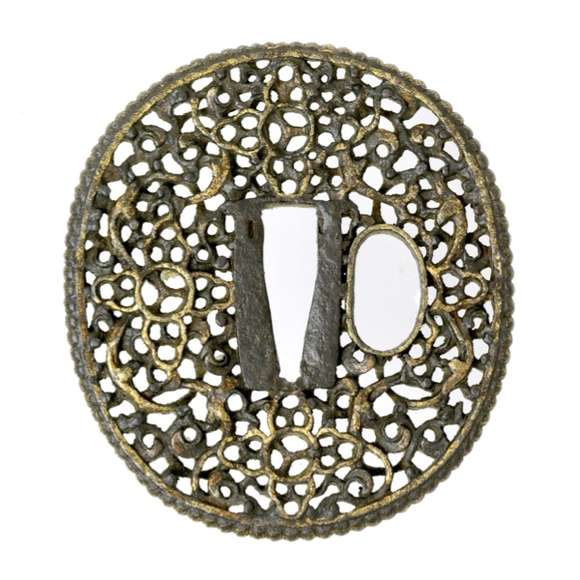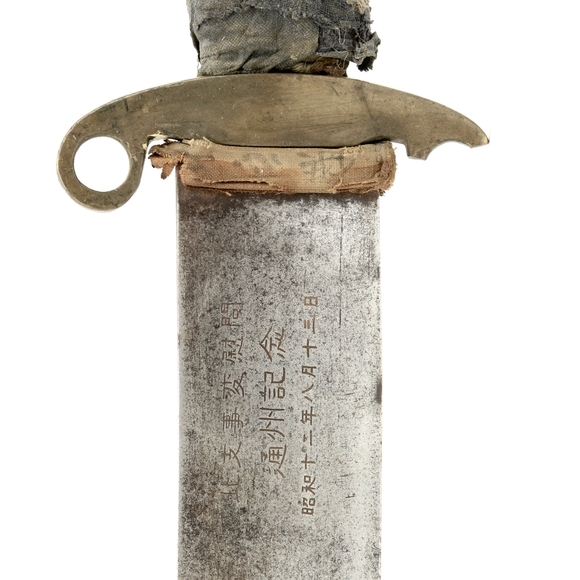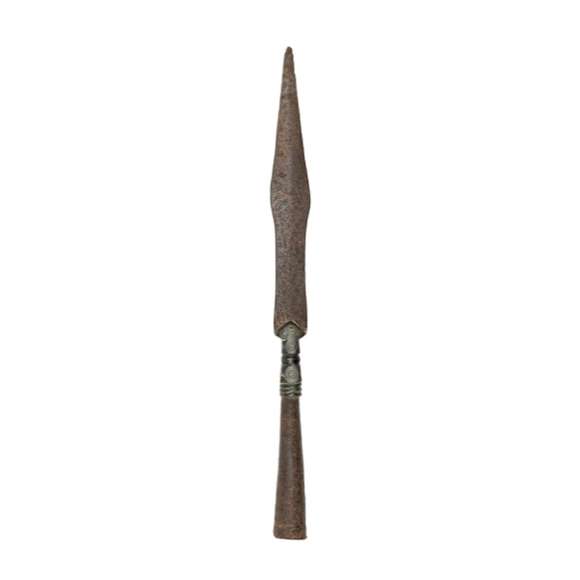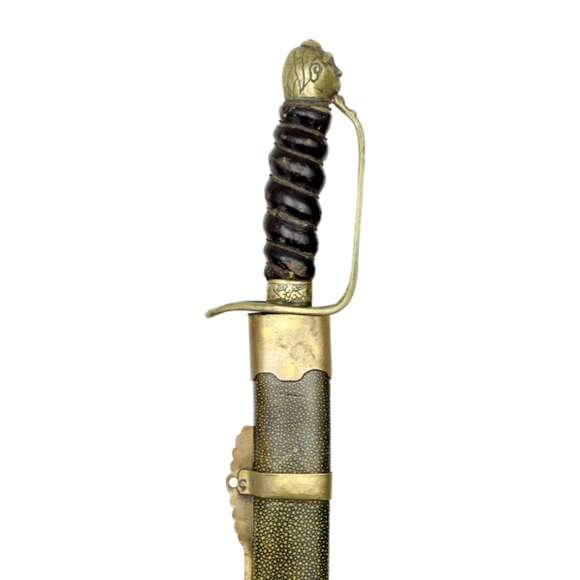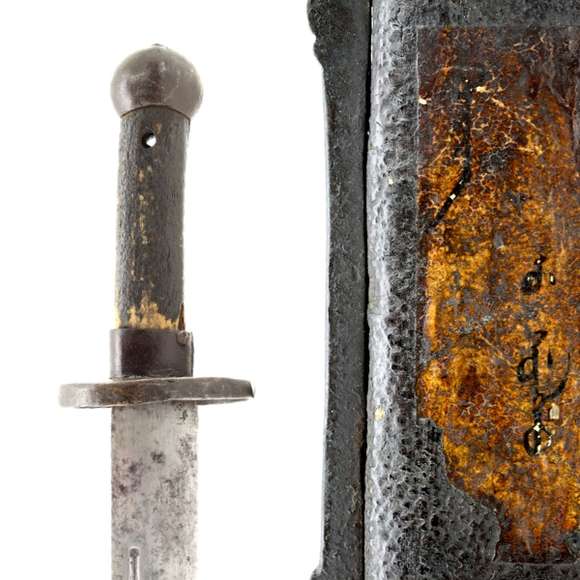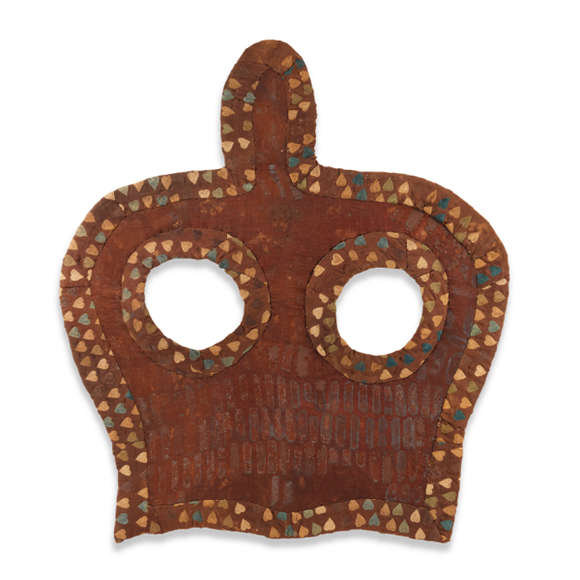A very rare Chinese saber guard dating from the height of the Qing dynasty.

68 cm
53.5 cm
Base 10mm
Middle 6.5mm
Near tip 4.5mm
Base 37mm
Middle 31mm
Near tip 26mm
887 grams
12.5 cm from handle side of the guard
China, Ming dynasty
Iron, steel
Probably 16th or 17th century
Description
An early Chinese militia jiàn most likely dating from the Ming dynasty (1368-1644). These were probably used by ah-hoc defense armies such as rural militias. For an introduction on this type of weapon, see my glossary article: Chinese militia jiàn
Blade
Of fairly standard size and weight for a 16th to 17th-century militia jiàn, it has a thick and heavy blade that is of sanmei construction with a high-carbon hardened edge plate between protective layers of tougher steel. The blade has obviously seen action, with several cuts made into the tougher steel by another weapon.
Crossguard
Its most unusual feature is the asymmetrical crossguard, with one end pointing slightly up and the other pointing slightly down. The same effect is seen on a saber carried by a northern huntsman on a 15th-century painting in the Freer and Sackler gallery. Crossguards were common on Chinese and steppe weapons well into the Ming dynasty, mostly on sabers but also seen on jiàn. They were supplanted gradually by discoid guards and more elaborate zoomorphic guards on later jiàn.
Conclusion
A practical fighting jiàn of the late Ming, exhibiting a rarer early form of crossguard.





With markings attributing it to the Tongzhou incident and a Japanese surrender tag.
Of classic shape, with a leaf-shaped blade on a socket, connected by a cast bronze base.
A standard pattern Qing military saber, but with the rare addition of a label in Manchu.
Silk horse mask from the Xianbei ruled dynasty which ruled northern China from 386 to 534 A.D.

